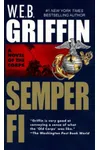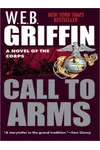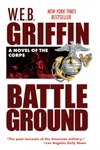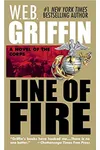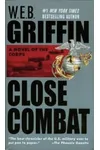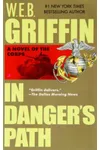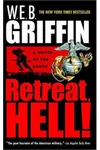Step into the pulse-pounding world of The Corps, where the bravery of U.S. Marines collides with the chaos of World War II and the Korean War! W.E.B. Griffin’s beloved military fiction series follows Major Kenneth J. 'Killer' McCoy and a tight-knit cast of characters through harrowing battles, covert missions, and personal sacrifices. With meticulous historical detail and gripping storytelling, The Corps immerses readers in a saga of duty, honor, and the human cost of war.
Blending authentic military life with richly developed characters, this series captures the essence of the Marine Corps spirit. Whether you’re a history buff or a fan of action-packed narratives, The Corps delivers an unforgettable journey into a world where courage is forged in the crucible of conflict.
How The Corps Began
W.E.B. Griffin, a pseudonym for William E. Butterworth III, drew on his own military experience to craft The Corps. A Korean War veteran, Griffin infused his novels with a deep respect for the armed forces, particularly the U.S. Marine Corps. Launched in 1986 with Semper Fi, the series was born from Griffin’s desire to tell historically accurate yet thrilling tales of Marines navigating the global upheavals of the mid-20th century. His knack for blending real events with fictional heroics quickly won over readers and critics alike.
Griffin’s meticulous research and insider knowledge—honed through connections with military figures—gave The Corps an authentic edge. The series’ focus on the Marines, from enlisted men to high-ranking officers, set it apart in the military fiction genre, offering a nuanced look at the personal and professional lives of those who serve.
The Heart of The Corps
The Corps spans ten novels, each diving into pivotal moments of World War II and the Korean War. Semper Fi (1986) kicks off the saga, following McCoy, a China Marine, as he navigates the lead-up to Pearl Harbor. Call to Arms (1987) traces the formation of the elite Marine Raiders post-Pearl Harbor, thrusting McCoy into the Pacific’s fiery conflicts. Counterattack (1990) chronicles America’s first counterstrike against Japan, while Under Fire (2002) shifts to the Korean War, where McCoy’s intelligence work with the fledgling CIA takes center stage.
The series shines through its themes of loyalty, sacrifice, and camaraderie. Griffin masterfully weaves historical events—like the Guadalcanal campaign and the Inchon landing—into personal stories of love, loss, and resilience. Characters like Colonel Edward Banning and General Fleming Pickering add depth, their relationships evolving amidst the fog of war. The Corps’ blend of technical military detail, witty banter, and emotional stakes creates a fast-paced, immersive read that captures the Marine Corps’ ethos.
While Griffin’s romances sometimes lean simplistic—his characters often fall in love at first sight—the series excels in depicting the inner workings of the Corps. From covert intelligence operations to battlefield heroics, The Corps balances action with insight, making military bureaucracy as thrilling as a firefight.
Why The Corps Resonates
The Corps has left an indelible mark on military fiction, praised for its historical accuracy and vivid characters. Fans, including veterans and history enthusiasts, laud Griffin’s ability to honor the Marine Corps’ legacy while spinning captivating yarns. Reviews highlight the series’ knack for making readers feel like they’re on the front lines, with one Amazon reader calling it 'a masterclass in blending history and fiction.' Its enduring appeal lies in its celebration of the human spirit under pressure, resonating with anyone who values stories of grit and determination.
Though never adapted for the screen, The Corps remains a fan favorite, with readers rereading the series for its rich world and relatable heroes. Its influence extends to other military fiction, inspiring authors to blend historical rigor with character-driven drama.
- First Book Published: Semper Fi, 1986
- Total Books: 10
- Key Settings: World War II Pacific Theater, Korean War
- Notable Recognition: Griffin’s novels praised by The Philadelphia Inquirer for 'fierce, stop-for-nothing scenes'
Ready to storm the beaches with Major McCoy? Grab Semper Fi and dive into The Corps’ thrilling world of military adventure!
